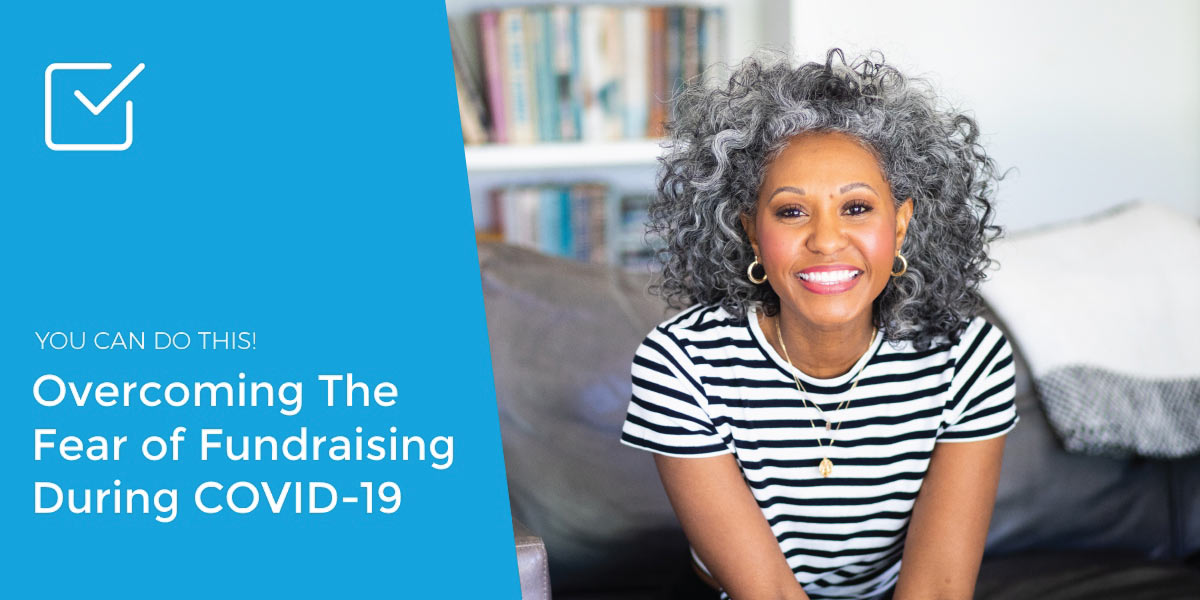
How Do You Fundraise in a Crisis?
Is it insensitive to fundraise during a crisis? How can you overcome fear to embrace fundraising again confidently? Follow these tips to connect with donors and gain the confidence to successfully fundraise in today’s new normal.
- Collect the Right Information
- Embrace Zoom for Donor Meetings
- Use DIY Fundraising Videos
- Pay Attention to Details
How Did We Manage Donor Relationships Before COVID-19?
During the COVID-19 pandemic, our relationships with donors changed dramatically. Those changes will drive the fundraising decisions we make well into the future. So it’s crucial to understand how different types of fundraising methods and segments have changed before we tackle how to adapt and even thrive in the future. Depending on your nonprofit’s size and fundraising model, you probably used one or several of these methods to accomplish your fundraising goals before the coronavirus (COVID-19) pandemic:
Major Gift Fundraising
Before COVID-19, nonprofit organizations that relied on major gifts, such as colleges or hospitals, held face-to-face meetings to obtain funds to support their programs. These gifts often depended on fundraisers visiting donors in their homes, restaurants, and offices. How will maintain your relationships with major donors without in-person appointments? Even after the pandemic, it is unlikely that you’ll be able to completely return to face-to-face solicitations or at least not at the same level as before.
Corporate and Foundation Appeals
Larger nonprofits tend to use a combination of direct mail, events, corporate or foundation appeals, as well as face-to-face meetings to fundraise. In-person meetings have played a key role for larger nonprofits who like to meet with corporations and foundations before submitting their appeals. How will you connect with corporations and foundations without the opportunity for face-to-face encounters?
Fundraising Events
Think about the number of fundraising events you’ve had at your nonprofit where you have significant donor contact. For larger nonprofits, fundraising events provide an excellent opportunity to meet with supporters in person to strengthen your relationships. Small to medium nonprofits also rely heavily on events to bring new people into their organization and to find volunteers. In-person events are now, for the most part, off the schedule. When restrictions are lifted, will supporters want to give up social distancing measures to attend your events? With no clear end to COVID-19 in sight, it may be a year or more before in-person event revenue returns to prior levels.
Individual Gifts, Sponsorships and Auction Item Donations

How many of your individual donors are experiencing financial difficulties due to the pandemic? Will their giving capacity be reduced, or will they stop giving altogether? Also included in this category would be the local store managers, banking representatives, and other management level donors who typically sponsor your events, provide auction items, and buy tables. Financially, many businesses may not be in the position to continue sponsoring your events. Additionally, the challenge of soliciting for this type of support is limited due to social distancing regulations regarding how many individuals are allowed inside certain businesses.
How Has COVID-19 Changed Donor Relationships?
COVID-19 has changed how we relate to donors, but it hasn’t changed what your constituents want out of a relationship with your nonprofit. Your donors still have a need to belong and be connected to other people, perhaps even more so now. The thing that’s changed is how you connect with them to accomplish that.
How Do You Connect with Donors in a Crisis?
Every relationship changes over time. Your relationship with donors is no exception. To succeed in fundraising, you need to find new ways to draw donors in and make them feel connected. Here are a few things to keep in mind, no matter which relational fundraising model you use.
Are You Collecting the Right Information?
If you cannot reach supporters, you can’t solicit them. Your donor management system and the data you’ve collected on donors is your most important resource to help you reach supporters. Make sure your database is up to date and free of errors. If your donor data is not accurate or is missing essential contact information, like email addresses or cell phone numbers, consider doing an information update campaign. This can be as simple as a phone call, postcard or email to supporters asking them how they are doing and letting them know you’re updating your contact information to keep them informed about your programs and services. Also, be sure your website includes an email signup form so constituents can stay in the loop.
Embrace Zoom for Donor Meetings

Even after lockdown restrictions are lifted, supporters will probably still be concerned about their health. It’s unlikely they’ll be willing to hold face to face meetings as frequently as before. However, as a fundraiser, you know that seeing a live face changes the donor interaction. What can you do? Embrace Zoom as an equivalent to a donor meeting. Now is the perfect time to use this technology since most of your supporters are already using it to connect to family members, work, and school. As with any face-to-face meeting, lead with your concern about your donor and their well-being. Also pay attention to their non verbal cues. Before your meeting, brainstorm about the unique ways Zoom can help you demonstrate the impact of your donor’s gift. Can you connect supporters with a recipient of your nonprofit’s programs via a live Zoom meeting so they can learn first hand how they’ve made a difference? Are there staff or board members that want to express their gratitude for the support of a specific program? Zoom meetings can be incredibly powerful ways to give donors insight into your mission and build your relationships.
Cultivate Donor Relationships Using DIY Videos
Online fundraising campaigns with videos encourage 57% of viewers to donate. Why? Because poignant and timely video messages can bring your donor inside any part of your organization, giving them access they’ve never had before. When you show your donors what you are doing and ask them to continue to support your efforts, you’ll create a sense of belonging. By keeping constituents in the know, they’ll feel connected and keep giving.
Videos are easy to share via social media, email, and on your website. They can be a powerful way to connect with supporters and generate revenue. The best part? You can make them right from your couch.
Pay Attention to the Details
When you’re trying new ways to reach out to donors and connect with them, don’t forget about the small details that can make the difference between success and a miss. If staff is working remotely and using personal cell phones to contact supporters, find a way to have those calls routed through the office, so your organization’s name appears on the caller id. Donors will be more likely to pick up and respond when they see your nonprofit is calling them versus a blocked caller ID phone number.
Also, pay attention to your background and location when making videos or holding Zoom meetings or other dial-in calls. Make sure your presence is professional yet engaging. Don’t give supporters a reason not to doubt that your organization is using their donation well.





